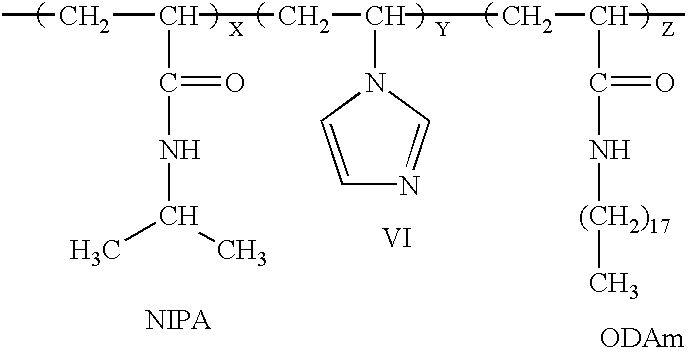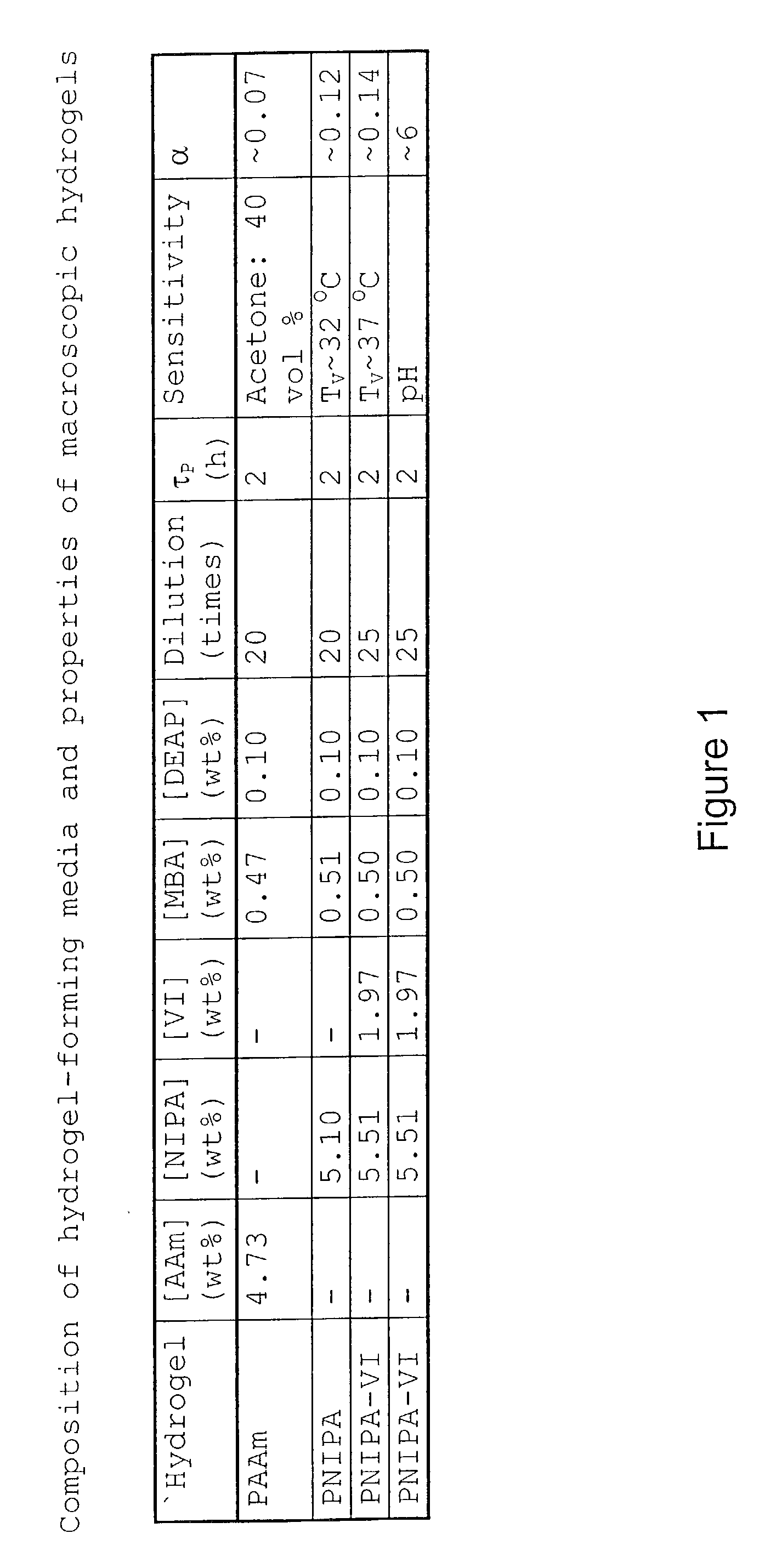Nanogels and their production using liposomes as reactors
a technology of liposomes and nanogels, which is applied in the direction of natural mineral layered products, drug compositions, synthetic resin layered products, etc., can solve the problems of difficult control, low yield of liposomes, and the macroscopic gel responds to environmental changes on a rather long time scale, so as to prevent polymerization and maximize the yield of nanoparticles
- Summary
- Abstract
- Description
- Claims
- Application Information
AI Technical Summary
Problems solved by technology
Method used
Image
Examples
Embodiment Construction
[0033] The present invention concerns nanogels and their production. The following description is presented to one skilled in the art to make and use the invention, and is provided in the context of particular embodiments and methods. Various modifications to the disclosed embodiments and methods will be apparent to those skilled in the art, and the general principles set forth below may be applied to other embodiments, methods and applications. Thus, the present invention is not intended to be limited to the embodiments and methods shown and the inventors regard their invention as the following disclosed methods, apparatus and materials and any other patentable subject matter to the extent that they are patentable.
[0034] The present invention uses liposomes as reactors in which hydrogel particles with nanometer-scale radii can be produced. As described in .sctn. 4.1 below, liposomes may be prepared by freeze / thawing and a combination of centrifugation and extrusion or sonication an...
PUM
| Property | Measurement | Unit |
|---|---|---|
| diameter | aaaaa | aaaaa |
| diameter | aaaaa | aaaaa |
| diameter | aaaaa | aaaaa |
Abstract
Description
Claims
Application Information
 Login to View More
Login to View More - R&D
- Intellectual Property
- Life Sciences
- Materials
- Tech Scout
- Unparalleled Data Quality
- Higher Quality Content
- 60% Fewer Hallucinations
Browse by: Latest US Patents, China's latest patents, Technical Efficacy Thesaurus, Application Domain, Technology Topic, Popular Technical Reports.
© 2025 PatSnap. All rights reserved.Legal|Privacy policy|Modern Slavery Act Transparency Statement|Sitemap|About US| Contact US: help@patsnap.com



